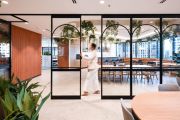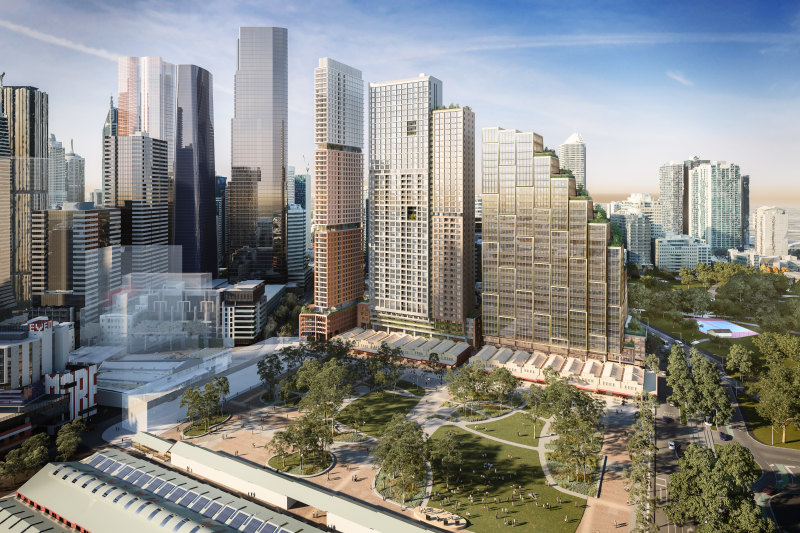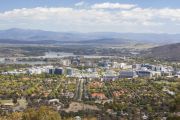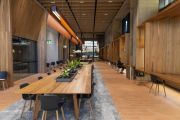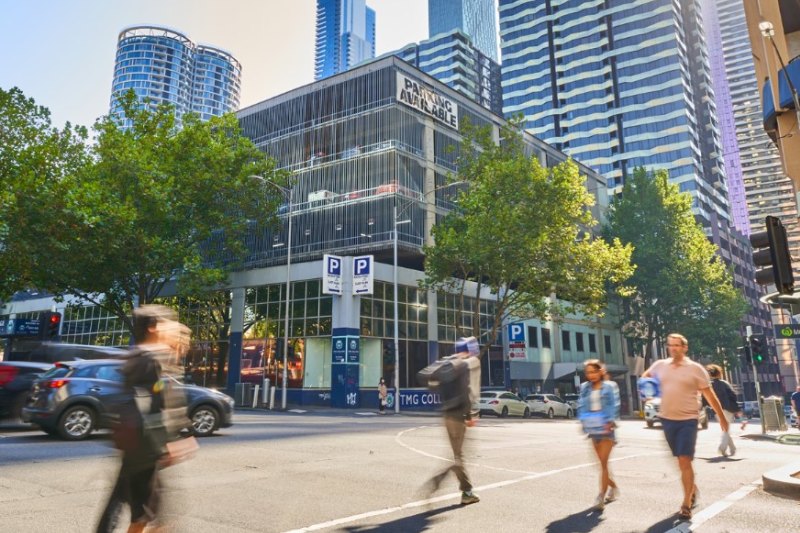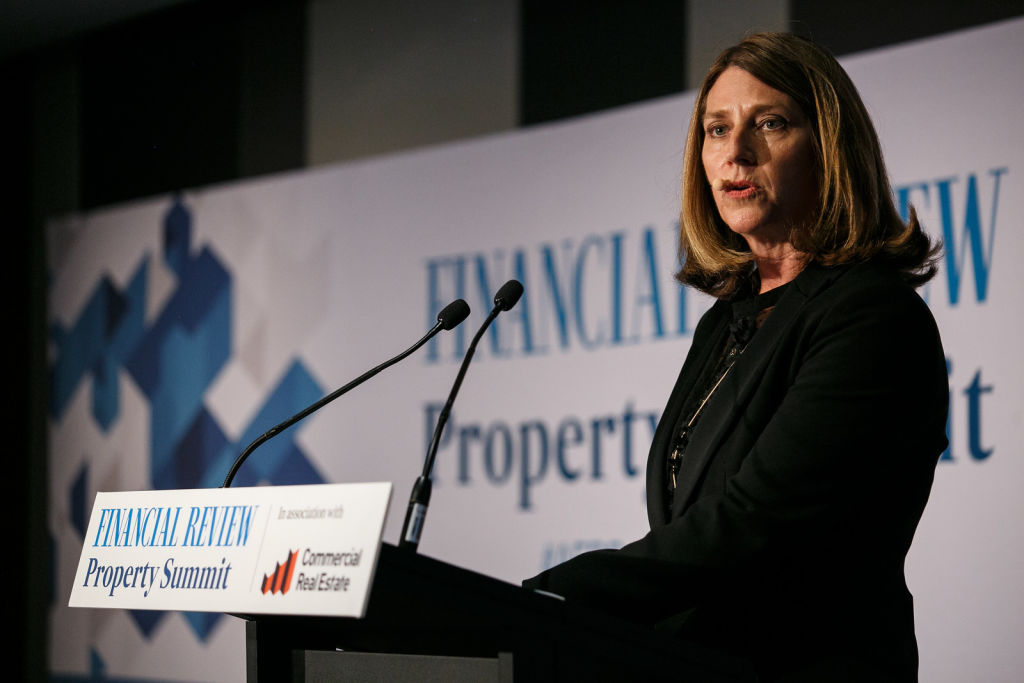
The trends set to shape Australia's office landscape in the next 10 years
The commercial property industry in Australia could grow to be worth more than $50 billion per annum in 10 years, as it tackles some of the most major – and exciting – challenges it’s ever seen, predicts one of the industry’s top developers.
And that means embracing transformational change throughout the industry.
“Simply delivering the same cookie-cutter office towers that dominated city skylines in generations past simply won’t cut it,” Kylie Rampa, chief executive – property Australia Lendlease told The Australian Financial Review Property Summit, held in association with Commercial Real Estate.
“A range of macro trends are reshaping the commercial landscape like never before, whether it’s the march of new technologies, or an absolute expectation that our precincts leave a much lighter environmental footprint, or a new generation of workers demanding more than a bricks and mortar place to work.”
Ms Rampa said the sector – which last year recorded transactions totalling over $38 billion, of which 70 per cent were in Sydney and Melbourne – is facing a number of major global trends that provide rich opportunities for development.
These include urbanisation, with over 60 per cent of the world’s population expected to live in urban areas by 2030, and the need for sustainable building practices and materials such as with the company’s new engineered-timber office in Brisbane that recycled 81 per cent of its total waste.
Infrastructure spending is another big driver, expected to rise to an average of $US5.1 trillion a year between now and 2035, an ageing demographic – the 60-plus demographic is projected to grow three times faster than the average population – and funds growth, with global assets under management forecast to top $US145 trillion by 2025.
The final factor is the development of technology and data. “Global venture capital investment in real estate technology has grown from $US1.8 billion in 2015 to nearly $US13 billion in 2017,” she said.
“And technology is one of the major drivers of the changes we’re anticipating in the commercial property sector during the next 10 years … As new technologies are perfected, we can expect to see even greater change in the way commercial buildings are delivered.”
A good example was the unveiling of the world’s first 3D printed office building in Dubai in 2016 where a 3D printer was used to construct the building using a special cement mixture in just 17 days and at a cost of about $140,000.
But most importantly, people say they want to work in offices with restaurants, cafes, shops and other services close to their workplace, like in Lendlease’s Barangaroo, with tenants Pernod Ricard saying they’ve been much more successful there in recruiting and retaining talent.
There are a number of new workplace initiatives being piloted too. One is The Local Office currently being trialled in Sydney’s Manly which, says Ms Rampa, “offers quality shared spaces for our corporate customers in local neighbourhoods. It bridges the gap between the traditional head office workplace and working from home.”
“It provides a place to enable deep thinking and doing – a place to focus without distraction.”
Digital connectivity is also emerging as a critical factor in commercial real estate for tenants, and not simply high-speed and secure fibre network, internet and 5G-ready voice and date mobile phone infrastructure. Many are now also looking for sensors that monitor light, CO2, noise, temperature, and humidity and which track individuals’ movements to help them with their creativity, efficiency and health.
“In the first six months of this year, the global Property Technology market – PropTech – attracted about $13 billion of venture capital,” said Ms Rampa. “In Australia alone, we now have more than 260 propte-ups vying for a piece of the pie.
“Technology and data provide significant opportunities for the property industry to enhance not just what we build, but, importantly, how we build. It’s enabling the property industry to get closer than ever before to its customers – the people that spend their working lives in the places we create.”
The use of “digital twins” – a digital replica of a physical asset — represents another complete game-changer for the property industry, she says. Lendlease is now using a digital twin for the design of buildings, which will eventually manage the process from design, to construction and operation, including the use of artificial intelligence and machine learning to perform automatic analysis and design of buildings.
“Our Barangaroo precinct is a good case in point,” Ms Rampa said. “Mechanical, electrical and hydraulic sensors monitor and respond to more than one million live data points from the precinct’s 40-plus management systems. And while the precinct is recognised for its state-of-the art use of data and analytics, we’re still a step away from getting to the point of real time optimisation of all systems.”
Also helping to reshape the modern workplace is the rise of Generation Z, the people born between 1995 and 2015, who are now between three and 22 years of age. By 2030, they’ll represent 36 per cent of the workforce. Gen Zs are more reserved than Millennials, more thoughtful and want to believe in what they do.
“Our research also shows that Gen Zs support purpose-led developments,” said Ms Rampa. “[These] are generally precincts that have a key motivation, theme or area of focus.
“A great example is innovation precincts. These are dense hubs of economic activity where innovation, entrepreneurship, creativity, and place-making all intersect. And they often have a commercial tenant or tenants as an anchor … We are becoming enablers of connected innovation districts, pairing researchers, universities and industry to collaborate … And tenants are responding. We are seeing less deals done on project by project basis; tenants are now looking at the employee experience to attract and retain the best talent.
“They’re no longer looking for the highest tower or the lowest rent, but the best place to attract the best talent.”
Get a weekly roundup of the latest news from Commercial Real Estate, delivered straight to your inbox!
